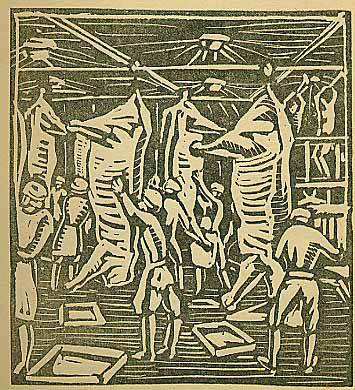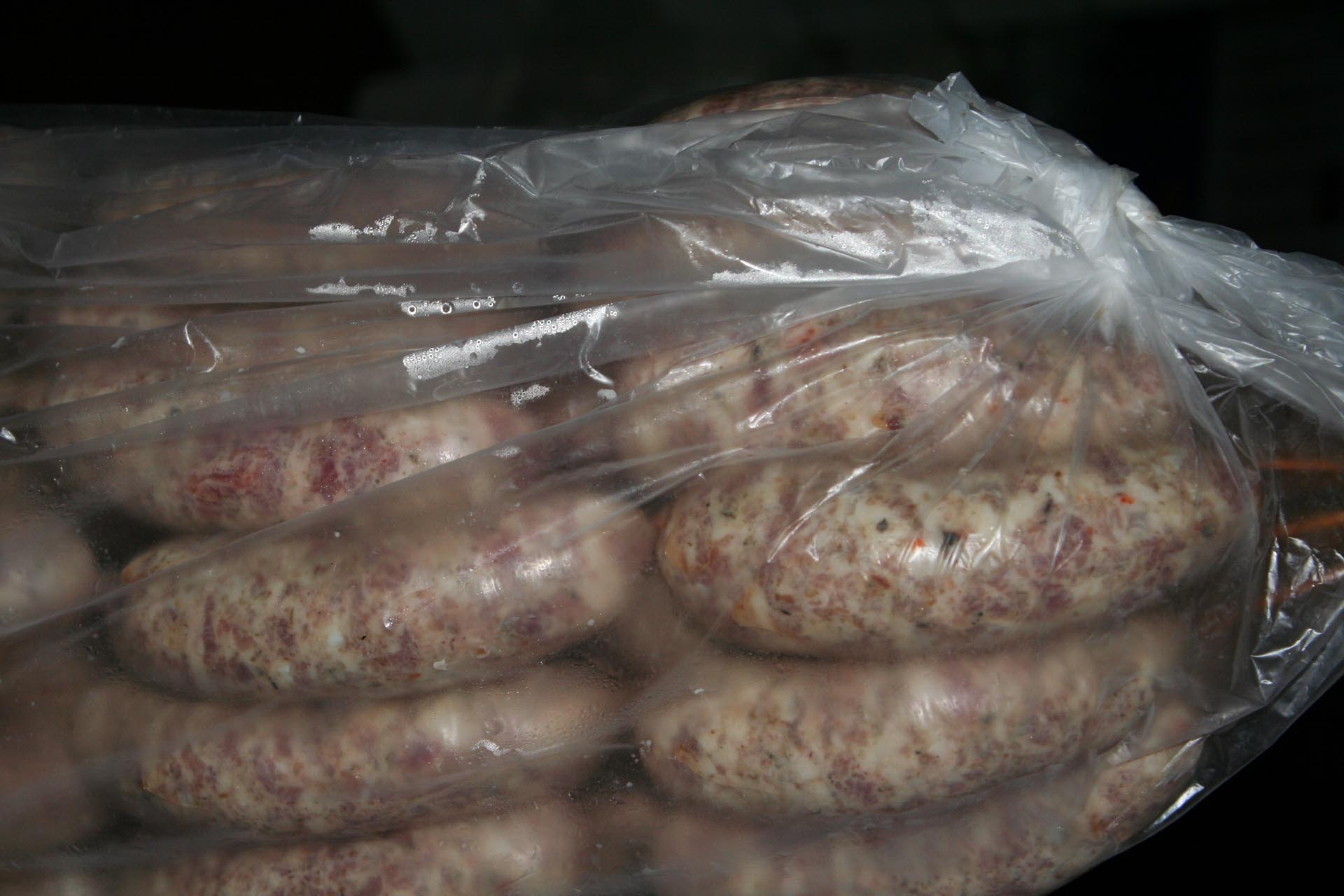The machines, technology, and gears in our supply chain matter, but so do the soft parts of the system’s underbelly — the human beings that make the thing work.
During a recent visit with a meat processor and a pig farmer in Argentina, two men told me disarming stories. Their stories seemed more suited to pass between intimate friends than between us, having only known each other for a few hours. While the stories revealed how chorizo is made, they were far more eloquent commentaries about these men’s lives than about sausage or animal husbandry.
While we’re exploring the food supply chain, we’re often confronting machines, technology, and the gears of the equipment that moves boxes from one place to another. These gears matter, but so do the soft parts of the system’s underbelly — the human beings that make the thing work. Like the humans that work at Frigorifico San Jose on Darwin Street, on the fringes of Buenos Aires. In one moment, you watch a large meat grinder mince and mix meat for the sausage stuffers. In the next moment, you watch your host’s eyes brim with tears.
“In one moment, you watch a large meat grinder mince and mix meat for the sausage stuffers. In the next moment, you watch your host’s eyes brim with tears.”
Ruben works at the pork processing plant housed in two buildings located in Lomas del Mirador. A rancher named Pablo Pelluse bought the land where the meat processors would set up their businesses in 1868. During the Argentinian Civil Wars, the area was caught in the regional battle and became known for its support of the Federalists against the Unitarios in Buenos Aires, who wanted a strong, centralized government. By the end of the century, the Federalists had lost, and Buenos Aires governed the unified areas around the city.

“Meat Packers” by Adolfo Bellocq, Wood Carving, 1922
Lomas del Mirador’s history runs along the same grain as the meat business in Buenos Aires. By the end of the 19th century, meat slaughtering had left its mark on the area as railways moved meat processing farther away from the city. The meat processing companies that had existed in the area replaced slaughterhouses and tallow factories and provided employment to the surge of immigrants, many from Italy, coming to live in Buenos Aires province during the late 19th and early 20th centuries. A soap factory, Jabon Federal, scooped up tallow to make bars of soap, joining other meat-related businesses and helping the town take on an appearance similar to other cities now known for their close association with the meat packing industry. Chicagos of the Argentinian meat industry, Villa Madero and Lomas del Mirador are historical artifacts of the old meat supply chain. The pork processing plant that I visited is one of the vestiges of the old meat processing neighborhoods of Buenos Aires.
Immigrants continue to occupy the area. Mario Klichinovich is the product manager and Ruben’s boss. Klichinovich is one family name you won’t find in Italy. Indications are that Mario’s family may have come from Austria after having fled Russia during the Jewish diaspora. Ruben is a food scientist by training and has spent 25 years working in the meatpacking business. He began working in food service through an internship while studying food “engineering,” the term used instead of food “science” in the U.S.
He led us to the chilled meat processing rooms to find a line of tables piled high with pig carcasses, mostly already cut into quarters and medium cuts. Workers hefted pig carcasses off the meat hooks inside a small truck that had been backed into the processing room. Occasional grunts revealed that this move took quite some physical effort.
Ruben’s team slices up a very small portion of Argentina’s pork production. Pig farmers have been increasing output by over 100 percent during the last decade, chasing a 60 percent increase in pork consumption. Exports of pork are also on the rise, in spite of Kirschner’s attempts to keep pork in Argentina.
His workers are bumping bags of pork, ham hocks, and trotters against each other, flashing sharp knives, and tossing offal into buckets beneath the tables. The working space is clean, constantly rinsed by water and cleaning fluids, but at some point Ruben will need more cutting tables and meat processors to deal with the increasing taste for Argentinian pork.

After watching the ad hoc choreography required to empty the small truck and prepare meat for processing, we wandered upstairs where the sausage takes shape. Workers in pristine whites, boots and hairnets, swung into action, sliding trays of cut-up pork meat into the jowls of the steel meat grinder. From out of a room containing buckets of spices come the seasonings that will be mixed into the ground pork, and steel tubs of ground pork become seasoned chorizo, some batches red, others not.
Meanwhile, on another stainless steel bench, workers slip the end of a pig intestine onto a sausage filler. A sausage stuffer opens the sausage casing, made in this case out of pig intestines, to enable the sausage meat to fill the tube created by the intestine. (I’ve tried to make sausage at home without a machine like this, and it’s a Laurel and Hardy experience however long you work at it.)

Ruben’s workers were slipping the stuffer into casing with lightening speed, inching up the casing while extruding pork mean into the tube as the next worker spun of lengths of string, tying the filled casing in increments of six to seven inches. No doubt this skill took hours of practice. Imagine the mistakes during the training period: sausages half tied-off, flinging loose sausage meat across the room.
Making sausage without a casing machine is a Laurel and Hardy experience no matter how long you work at it.
Back down in the cutting room, we saw the process begin over again. Moving into his office, Ruben explained that he needed to make a few calls to chase down payments and orders before driving us out into the countryside to visit one of his pig farmers. Along one counter, colorful plastic binders spoke of Ruben’s attempt to bring order to the chaos in the next room.
In the car during the three-hour drive to the pig producer, I got a chance to know Ruben outside of his meat processor demeanor. I asked about his family.
He replied, “It’s a sad story.” His eyes filled with tears as he drove on the highway and recounted how his wife passed away a week after giving birth to his two-year old daughter. His job, he confessed, was the only thing that held him together, providing one constant despite the tumult within his own life. Without warning, we were talking about his deep loss, about his love for his daughter, about his fears for her future, his insecurities as her only provider.
Who are these people, working the pork processing supply chain? Working the loading dock, counting cases on a pallet? People like Ruben.

Author
The same sense of wonder that called Dr. Robyn Metcalfe to run the great deserts of the world has led her to take on the task of mapping our current food supply. A historian, desert distance runner and food futurist with a lifelong hunger to take on irrational challenges, Robyn Metcalfe marvels at what it takes to simply create a peanut butter and jelly sandwich.